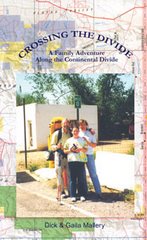100 rivers begin in the Canadian Rockies. Clear, icy flows from melting glaciers trickle down the mountains, creating headwaters to rivers that feed into three oceans: the Atlantic, the Pacific and the Arctic. The thousands of lakes here take on every color in the blue-green spectrum. The shades are created when sunlight hits the water and reflects off suspended particles of rock ground into dust by the movement of glaciers. The color of any particular body of water is determined by the different sizes and mineral contents of those ‘’rock flour’’ particles. The shades are so unusual that on my return from a trip to the Canadian Rockies last summer, I consulted paint charts for help in naming them. Some of the best matches: jargon jade, calypso, rapture blue, emerald, Aegean. Summer days are long, with up to 17 hours of sunshine, yet temperatures tend to hover in the 70s. Still not convinced western Canada’s Rockies, the south end of which border Idaho and Montana, are worth the trip? Consider the waterfalls thundering into deep green pools and explode against protruding rocks. Tiny sprays of water droplets collide with beams of sunlight, creating constant flickers of rainbows. Or the snowcapped mountains that in a certain light are mirrored in still lakes, making it appear as if earth, water and sky have become one.
Hollywood discovered the Canadian Rockies before the moving pictures had sound. Many times, these mountains have been stand-ins for the Swiss Alps. Many of the pictures floating around our minds of the wild American West are actually images of the Canadian Rockies. The question is not whether to put this area on your travel wish list, but which part of the vast territory to tackle. Four contiguous national parks - Banff, Yoho, Jasper and Kootenay, all UNESCO World Heritage sites - lie within the provinces of Alberta and British Columbia, and are surrounded by millions of acres of wilderness areas, forest reserves and provincial parks.
Subscribe to:
Post Comments (Atom)





No comments:
Post a Comment